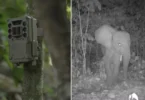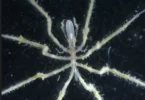Ants may seem small and insignificant, but their world is vast and incredibly diverse. From the bustling cities of bustling urban landscapes to the serene corners of tropical rainforests, ants are everywhere, playing crucial roles in ecosystems around the globe. In this blog, we embark on an enlightening journey to explore the fascinating diversity of ant species. Discover their unique characteristics, where they can be found, and why they are more than just tiny insects.
1. The Industrious Carpenter Ant (Camponotini)
Carpenter ants are known for their impressive nesting habits. They build their homes by excavating wood, creating intricate tunnels and chambers within trees and wooden structures.
Where to Find Them:
- Habitat: Wooded areas, forests, and sometimes inside wooden structures in homes.
- Characteristics: Large, black or reddish-brown ants with strong mandibles.
Fun Fact:
Carpenter ants are not destructive to living trees, but their nesting can damage wooden structures and furniture.
2. The Mighty Fire Ant (Solenopsis invicta)
Fire ants are infamous for their aggressive behavior and painful stings. Their name comes from the fiery sensation of their sting, which can cause allergic reactions in some individuals.
Where to Find Them:
- Habitat: Open fields, lawns, and pastures, especially in warmer climates.
- Characteristics: Red to reddish-brown ants with a noticeable stinger.
Fun Fact:
Fire ants build large, visible mounds in soil and can swarm aggressively when their nest is disturbed.
3. The Elusive Leafcutter Ant (Atta and Acromyrmex)
Leafcutter ants are remarkable for their ability to cut and transport leaves and plant material back to their nests. They are a crucial part of many tropical ecosystems.
Where to Find Them:
- Habitat: Tropical and subtropical forests of Central and South America.
- Characteristics: Large, strong ants that cut and carry pieces of leaves.
Fun Fact:
Leafcutter ants cultivate fungus in their nests by feeding it with the leaves they collect, creating a unique agricultural system.
4. The Tiny Pharaoh Ant (Monomorium pharaonis)
Pharaoh ants are small but highly adaptive. They are notorious for their ability to infest buildings and are challenging to control once established.
Where to Find Them:
- Habitat: Urban environments, homes, and hospitals.
- Characteristics: Very small, yellowish to light brown ants.
Fun Fact:
Pharaoh ants are known for their ability to form large colonies with multiple queens, which makes them difficult to eradicate.
5. The Social Weaver Ant (Oecophylla)
Weaver ants are famous for their unique nest-building behavior. They create intricate nests by weaving leaves together using silk produced by their larvae.
Where to Find Them:
- Habitat: Tropical trees in Southeast Asia and Northern Australia.
- Characteristics: Medium-sized ants that work together to build nests.
Fun Fact:
Weaver ants are known for their complex social structure and teamwork, which allows them to build large, communal nests in trees.
6. The Majestic Bullet Ant (Paraponera clavata)
Bullet ants are infamous for their excruciating sting, which is said to be one of the most painful insect stings in the world. Their pain has been likened to being shot.
Where to Find Them:
- Habitat: Lowland rainforests in Central and South America.
- Characteristics: Large ants with a formidable sting and a dark, reddish-brown color.
Fun Fact:
The sting of the bullet ant is so intense that it is used in a traditional initiation rite among some indigenous tribes.
Conclusion:
Ants are not just ordinary insects; they are a testament to nature’s ingenuity and adaptability. From the industrious carpenter ants to the pain-inducing bullet ants, each species has its own unique story and role in the ecosystem. By understanding these fascinating creatures, we gain a deeper appreciation for the complex web of life that surrounds us.
Explore the diverse world of ants and discover the incredible ways these tiny beings contribute to the balance of our ecosystems. Next time you spot an ant, remember that it’s part of a larger, extraordinary world.








